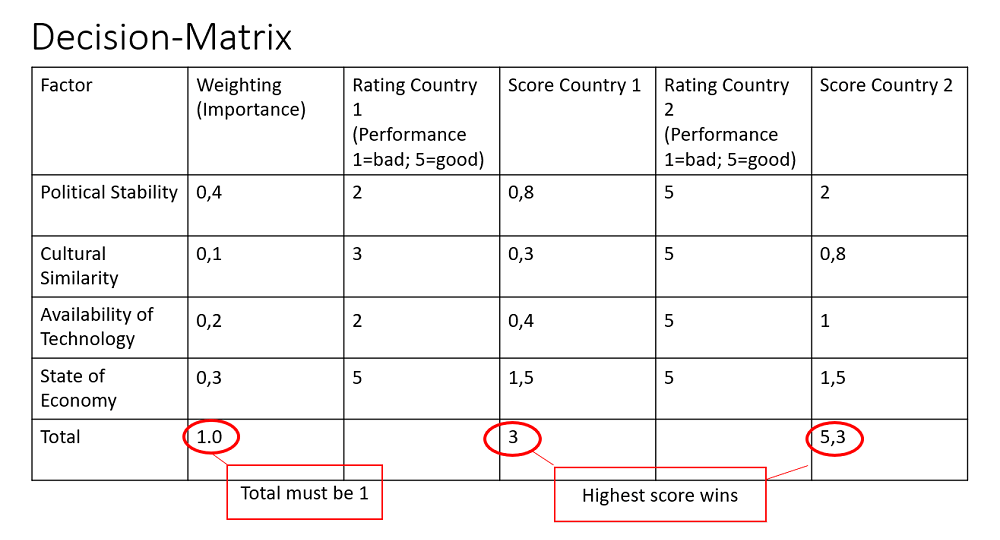
The Pugh Matrix is a decision-making tool that is used to compare multiple alternatives and select the most favourable one. In this method, the various options are evaluated based on several weighted criteria. This is a variation of the L-shaped matrix.
This tool is also referred to by many other terms such as decision grid, selection matrix or grid, problem matrix, problem selection matrix, opportunity analysis, solution matrix, criteria rating form, criteria-based matrix.
When to use a Decision Matrix
The Decision Matrix is used when one has to select the best option from a list of options, based on several criteria.
Typical situations in which the decision matrix can be used include:
- Compare several countries/markets based on various criteria and choose the best market (for expanding, launching a product).
- Choose one solution to implement from various problem-solving approaches.
- In general, for selecting the best choice from multiple options based on several or criteria.
This tool is commonly used by marketing managers, project managers, business analysts for decision making to choose from several opportunities with complex requirements.
How to use the Pugh Matrix: Decision-Making Matrix
Here’s how to use the Decision-Making Matrix.
Identify the criteria that you consider are the most relevant to assess the attractiveness of the various options.
Once the relevant criteria are, these should be 1) weighted (how important is each factor) and 2) rated using an appropriate numeric scale.
You should use a rating scale for each criterion. Here are some options:
- 1, 2, 3 (1 = low, 2 = medium, 3 = high)
- 1, 2, 3, 4, 5 (1 = very poor to 5 = excellent)
Once the scale is decided, each of the factors can be scored on a scale from 1-5, very poor to excellent (assuming you have chosen the 1-5 scale).
The weighted factors help to compare the various options.
Finally, compare the scores of all the options; the option with the highest score should be selected.
It is important to logically build up the decision matrix. The factors should be formulated in a way that the high end of the scale (5 for the above example) is always the rating that would you make to select that option.
BATheories.com is managed by a group of educators from Mumbai. We also manage the website AcademicsHQ.com. Our panel includes experienced professionals and lecturers with a background in management. BATheories is where we talk about the various business theories and models for BA (Business Administration) students.